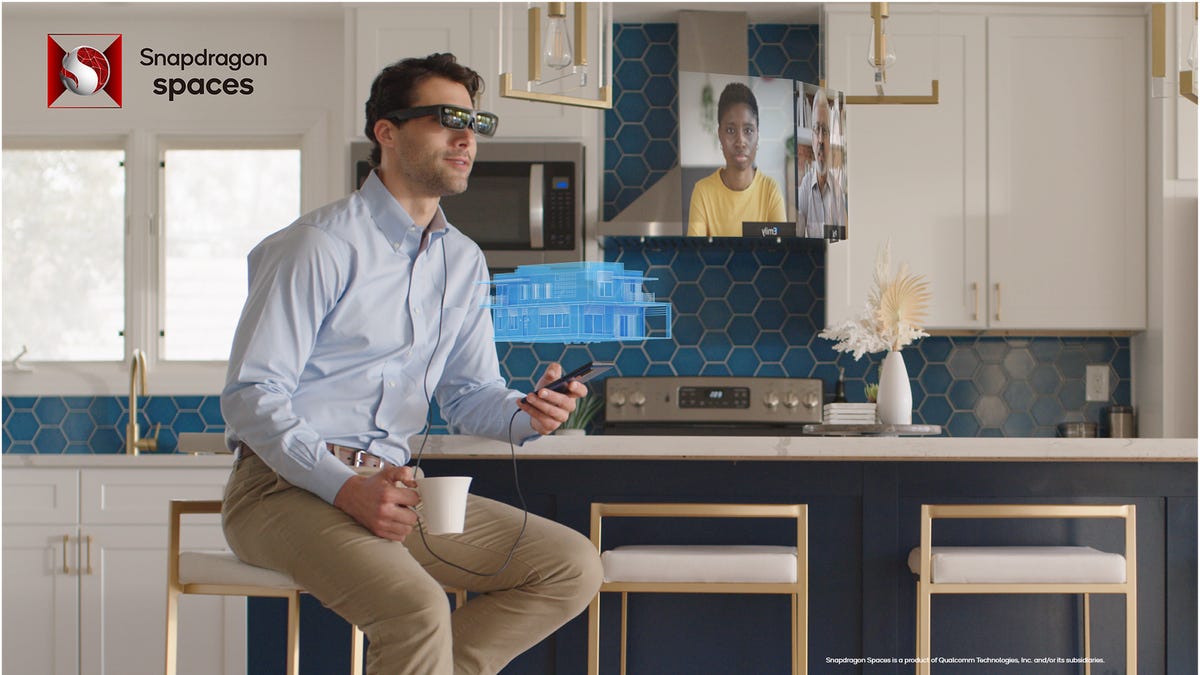 Why You Can Trust CNET
Why You Can Trust CNET Qualcomm's Phone-Connected AR Headset Plans Hint at Google and Apple's Future
Future headsets will need to work better with phone apps: Qualcomm's moves point to where Google and Apple need to go.

Qualcomm's software tools for AR glasses will extend phone apps to headsets.
Apple's expected unveiling of its mixed reality headset is in just a matter of days, but Qualcomm has announced more of its own AR/VR moves ahead of Apple's WWDC event. At AWE, an AR-focused developer conference taking place May 31 to June 2 in San Jose, California, chipmaker Qualcomm laid out new steps for how headsets and glasses could work better with phones. That's exactly where brands like Apple and Google need to go next.
Qualcomm has been working on software bridging AR glasses and Android phones with certain Qualcomm chips for years now, under an infrastructure called Snapdragon Spaces. The company's latest feature, Dual Render Fusion, aims to make it easier for Android apps already on phones to add AR features that could leap over to connected glasses.
Read more: Apple's Mixed Reality Headset: What We Expect
Qualcomm's chips are already in most of the XR (AR/VR) devices on the market, and a few more that are coming soon: Oppo's MR Glasses, a mixed reality headset, use cameras to have passthrough video on their display, much like the Quest Pro and Apple's expected headset. Qualcomm is also working with Google and Samsung on a future mixed reality platform and device expected to be further detailed sometime in the next year.
Both Apple's headset, and Google's Samsung-Qualcomm partnership, should and probably will involve letting apps on the devices we already use – phones, and tablets and maybe laptops – work with future headsets. Microsoft's XR partnership with Qualcomm on chips could also be laying out similar plans for Windows.
Snapdragon Spaces isn't at all the ideal way for all these apps to work across AR glasses, but it's a start. And it's also a hint, once again, that hardware plans are already leaning into the idea of these headsets existing more as interconnected peripherals than standalone devices. That's fine by me: While the Quest 2 has been impressive, the only way for these goggles and glasses to be more useful is to work seamlessly with the stuff already in our pockets.

